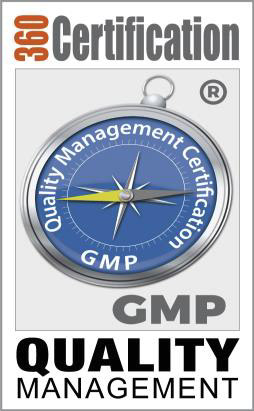Proper pool maintenance is essential, not only for sparkling clean water but also for the health and safety of swimmers. From balancing pH levels to ensuring the right chlorine concentration, the right chemical care prevents bacteria, algae and irritants that can turn a relaxing swim into a health hazard.
In this guide you will uncover the basics of pool chemistry, the chemicals required and when to use them for effective pool maintenance.
Understanding Swimming Pool Water Chemistry
Swimming pool water chemistry differs vastly from freshwater or water for hot tubs. With the addition of chlorine and other disinfectants, the water in your pool is much more acidic than regular tap water. It’s important to understand that pool maintenance involves balancing both the pH (acidity) levels and sanitiser levels.
So, first things first, let’s look at the main components that make up your pool’s water chemistry.
- Chlorine levels
Your total chlorine (TC) levels are the combined amount of free chlorine and combined chlorine present in your pool water.
Free chlorine (FC) is the amount of chlorine in your pool that’s available to sanitise and disinfect your water, while combined chlorine has already reacted with contaminants in the water and is no longer effective for sanitation.
Free chlorine is one of the most important components when it comes to maintaining a healthy and safe swimming pool. FC comes from a chlorinated sanitiser, such as liquid chlorine or calcium hypochlorite, and is used to control bacteria, algae growth, and other contaminants in pool water. It’s important to make sure you have the right amount of free chlorine in the water so that you are not exposed to any health risks. FC levels should generally remain between 1-3 parts per million (ppm) for optimal results.
- pH levels
pH levels are important for keeping the water in your pool clean and safe. You need a balance of different chemicals to make sure the pH level is right, which helps stop bacteria and other things that could make you sick. An ideal pH level should be between 7.2 and 7.6.
When your pool’s pH level is above that range, it can cause eye and skin irritations for swimmers. Lower levels can lead to corrosion and scaling on the pool’s surfaces. As such, it’s vital to regularly test your pH levels and treat as necessary.
- Total Alkalinity (TA)
Total alkalinity refers to the number of alkaline substances in your pool water. Alkaline substances are elements or compounds that can raise the pH level of a solution. They act as a buffer against sudden changes in pH, which helps maintain a stable pool environment.
As such, it’s crucial to test alkalinity levels regularly. The ideal range for total alkalinity (TA) levels is between 80 and 120 ppm, as this helps keep pH levels within a stable range.
If your TA levels are too low, it can lead to rapid pH changes that can cause eye irritation or skin rashes among swimmers. If your total alkalinity is too high, your pH level will be almost impossible to change.
- Calcium hardness levels
Calcium hardness (CH) levels play an important role in water chemistry, as calcium hardness affects calcium and magnesium levels keeping them balanced. Having too much calcium in the water can cause scaling on pool surfaces, whilst too little can lead to corrosion and etching of the surface.
The ideal range for a pool’s calcium hardness level should be between 200-400 ppm, depending on your specific pool’s needs.
When testing for CH, you need to use a special kit or strips. Remember, it’s important to keep an eye on these levels as they can have an adverse effect on your pool if not managed correctly.
What and When Chemicals need to be used
So, with all of the above in mind, which swimming pool chemicals will need to be added to your pool to maintain a perfect balance?
- The first chemical you need to maintain your pool is Chlorine. Chlorine kills bacteria and other microorganisms, helping keep the water clean and safe for swimming. You can add chlorine in a variety of forms, such as chlorine tablets, chlorine granules, sticks, or liquids. You can also get Chlorine Reducers to help when chlorine levels are too high.
- If your alkalinity levels are low, you may need a Total Alkalinity Increaser. When using, make sure to stick to the manufacturer’s guidelines.
- If you find that the water becomes cloudy or murky, you may need to add a Pool Flocculant or Clarifier. This helps bind together dirt particles, making them easier to filter out of your pool.
- A Pool Stabiliser will make sure your chlorine levels don’t drop too low. These are often made with cyanuric acid; a chemical that helps protect chlorine from being broken down by the sun’s UV rays.
- A pH Increaser can be used to boost pH levels if they drop too low and a pH Decreaser if they are too high.
- If algae growth is found in your pool, we recommend shocking your pool with an Algicide or Algae Controller.
With these chemicals to hand, plus an ongoing swimming pool maintenance schedule, you’ll be well on your way to creating a safe and enjoyable swimming environment.
Pool Chemicals FAQs
What chemicals do I need for my above-ground pool?
The same chemicals are required for both above-ground and in-ground pools: chlorine, alkalinity increaser, pool flocculant, stabiliser and a pH increaser.
What chemicals do you add first when opening a pool?
When opening a pool for the season, it is important to start with chlorine and an alkalinity increaser. You should then check and adjust pH levels as needed. Finally, you should add other necessary chemicals, such as a stabiliser or pool flocculant, if required. Remember, don’t handle any chemicals that you aren’t familiar with. Always follow the manufacturer’s directions.
Are pool chemicals dangerous?
Whether or not pool chemicals are dangerous depends on how they are handled and used. Always read and follow the manufacturer’s instructions when handling any chemical, including chlorine, alkalinity increaser, stabiliser, and other pool chemicals.
Store these chemicals in a safe place, away from children and pets.





